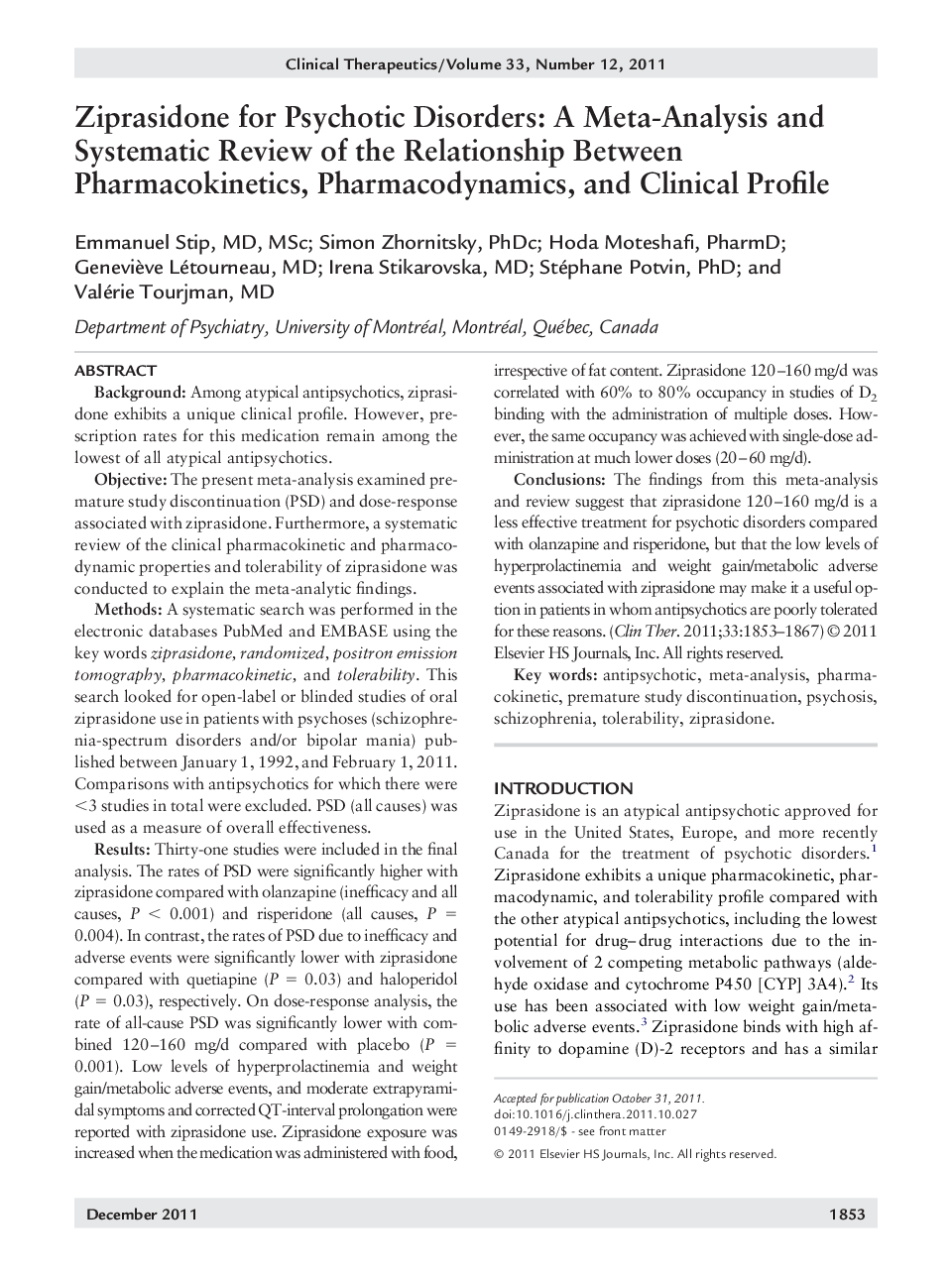| کد مقاله | کد نشریه | سال انتشار | مقاله انگلیسی | نسخه تمام متن |
|---|---|---|---|---|
| 2528114 | 1119955 | 2011 | 15 صفحه PDF | دانلود رایگان |

BackgroundAmong atypical antipsychotics, ziprasidone exhibits a unique clinical profile. However, prescription rates for this medication remain among the lowest of all atypical antipsychotics.ObjectiveThe present meta-analysis examined premature study discontinuation (PSD) and dose-response associated with ziprasidone. Furthermore, a systematic review of the clinical pharmacokinetic and pharmacodynamic properties and tolerability of ziprasidone was conducted to explain the meta-analytic findings.MethodsA systematic search was performed in the electronic databases PubMed and EMBASE using the key words ziprasidone, randomized, positron emission tomography, pharmacokinetic, and tolerability. This search looked for open-label or blinded studies of oral ziprasidone use in patients with psychoses (schizophrenia-spectrum disorders and/or bipolar mania) published between January 1, 1992, and February 1, 2011. Comparisons with antipsychotics for which there were <3 studies in total were excluded. PSD (all causes) was used as a measure of overall effectiveness.ResultsThirty-one studies were included in the final analysis. The rates of PSD were significantly higher with ziprasidone compared with olanzapine (inefficacy and all causes, P < 0.001) and risperidone (all causes, P = 0.004). In contrast, the rates of PSD due to inefficacy and adverse events were significantly lower with ziprasidone compared with quetiapine (P = 0.03) and haloperidol (P = 0.03), respectively. On dose-response analysis, the rate of all-cause PSD was significantly lower with combined 120–160 mg/d compared with placebo (P = 0.001). Low levels of hyperprolactinemia and weight gain/metabolic adverse events, and moderate extrapyramidal symptoms and corrected QT-interval prolongation were reported with ziprasidone use. Ziprasidone exposure was increased when the medication was administered with food, irrespective of fat content. Ziprasidone 120–160 mg/d was correlated with 60% to 80% occupancy in studies of D2 binding with the administration of multiple doses. However, the same occupancy was achieved with single-dose administration at much lower doses (20–60 mg/d).ConclusionsThe findings from this meta-analysis and review suggest that ziprasidone 120–160 mg/d is a less effective treatment for psychotic disorders compared with olanzapine and risperidone, but that the low levels of hyperprolactinemia and weight gain/metabolic adverse events associated with ziprasidone may make it a useful option in patients in whom antipsychotics are poorly tolerated for these reasons.
Journal: Clinical Therapeutics - Volume 33, Issue 12, December 2011, Pages 1853–1867